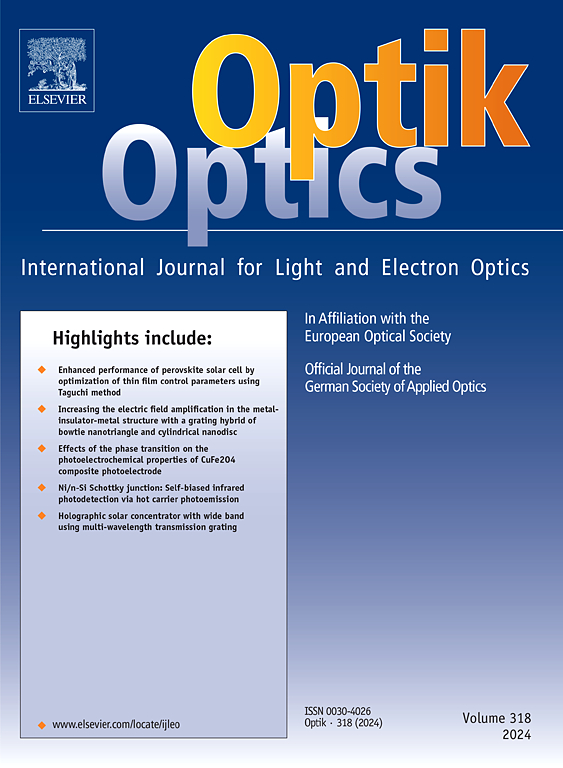Convergence of multi-domain hybrid dispersion compensation paradigms for ultra-high-speed optical fiber transmission in spectrally-efficient coherent communication systems
IF 3.1
3区 物理与天体物理
Q2 Engineering
引用次数: 0
Abstract
As global data traffic accelerates, the challenge of chromatic dispersion in high-speed long-haul optical fiber systems has become increasingly critical. This study explores advanced hybrid dispersion compensation techniques designed to mitigate dispersion effects and enhance transmission fidelity in 100 Gbps optical networks. A comprehensive simulation framework was implemented using Opti System and MATLAB to analyze the performance of individual and hybrid compensation methods, including Dispersion Compensating Fiber (DCF), Fiber Bragg Grating (FBG), Electronic Dispersion Compensation (EDC), and Optical Phase Conjugation (OPC). Results indicate that while DCF and FBG offer notable improvements individually, their performance is significantly enhanced when integrated with EDC. The DCF+EDC configuration achieved a Bit Error Rate (BER) of , while FBG and EDC further reduced BER to 5 × The OPC with DCF scheme demonstrated superior performance with BER approaching 1 ×and a corresponding Q-factor of approximately 21 dB. Eye diagram analysis revealed substantial improvements in signal integrity, with minimal inter-symbol interference and restored pulse symmetry. These results confirm the efficacy of hybrid compensation schemes in extending transmission reach, maintaining signal quality, and supporting ultra-high-speed optical communication over long distances.
频谱高效相干通信系统中超高速光纤传输多域混合色散补偿范式的收敛性
随着全球数据流量的加速,高速长途光纤系统的色散问题日益严峻。本研究探索了先进的混合色散补偿技术,旨在减轻色散效应并提高100 Gbps光网络的传输保真度。利用Opti系统和MATLAB实现了一个全面的仿真框架,分析了色散补偿光纤(DCF)、光纤布拉格光栅(FBG)、电子色散补偿(EDC)和光相位共轭(OPC)等单独补偿和混合补偿方法的性能。结果表明,虽然DCF和FBG单独提供了显着的改进,但当与EDC集成时,它们的性能显着提高。DCF+EDC结构的误码率(BER)为10−7,而FBG和EDC进一步将误码率降低到5 ×10−8。DCF方案的OPC表现出优异的性能,误码率接近1 ×10−9,相应的q因子约为21 dB。眼图分析揭示了信号完整性的实质性改善,具有最小的符号间干扰和恢复的脉冲对称性。这些结果证实了混合补偿方案在延长传输距离、保持信号质量和支持超高速长距离光通信方面的有效性。
本文章由计算机程序翻译,如有差异,请以英文原文为准。
求助全文
约1分钟内获得全文
求助全文
来源期刊

Optik
物理-光学
CiteScore
6.90
自引率
12.90%
发文量
1471
审稿时长
46 days
期刊介绍:
Optik publishes articles on all subjects related to light and electron optics and offers a survey on the state of research and technical development within the following fields:
Optics:
-Optics design, geometrical and beam optics, wave optics-
Optical and micro-optical components, diffractive optics, devices and systems-
Photoelectric and optoelectronic devices-
Optical properties of materials, nonlinear optics, wave propagation and transmission in homogeneous and inhomogeneous materials-
Information optics, image formation and processing, holographic techniques, microscopes and spectrometer techniques, and image analysis-
Optical testing and measuring techniques-
Optical communication and computing-
Physiological optics-
As well as other related topics.
 求助内容:
求助内容: 应助结果提醒方式:
应助结果提醒方式:


